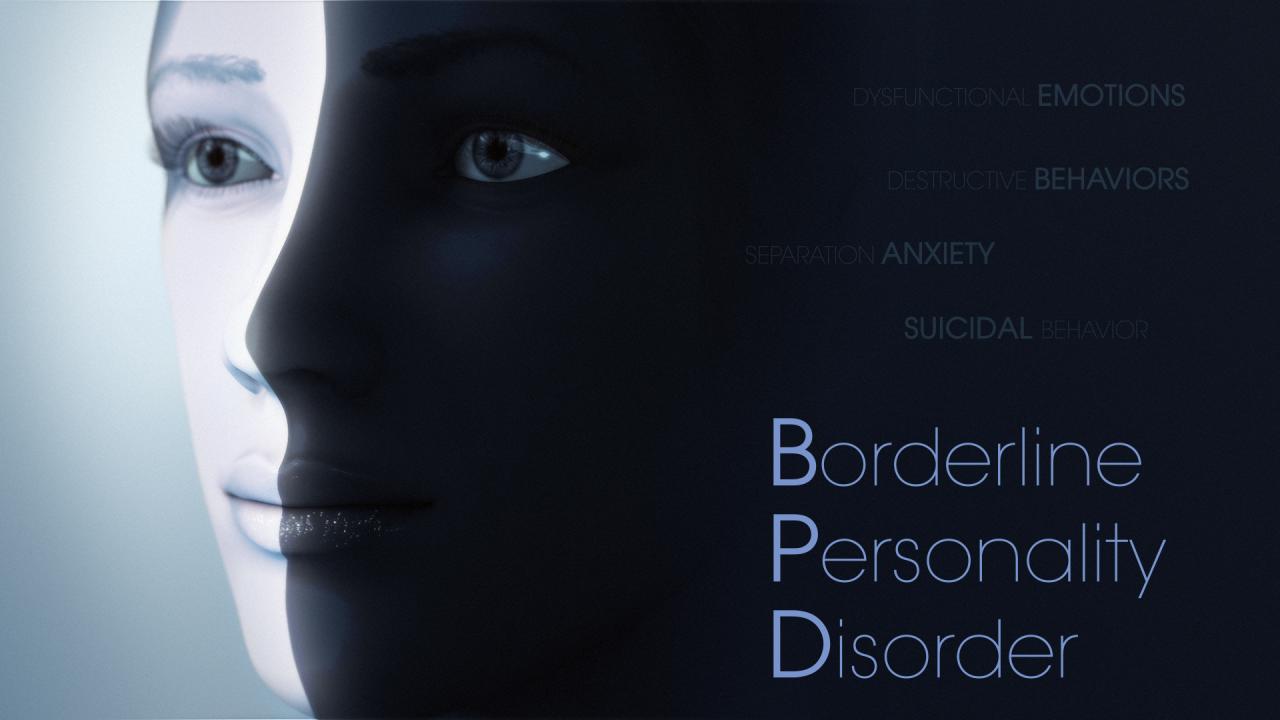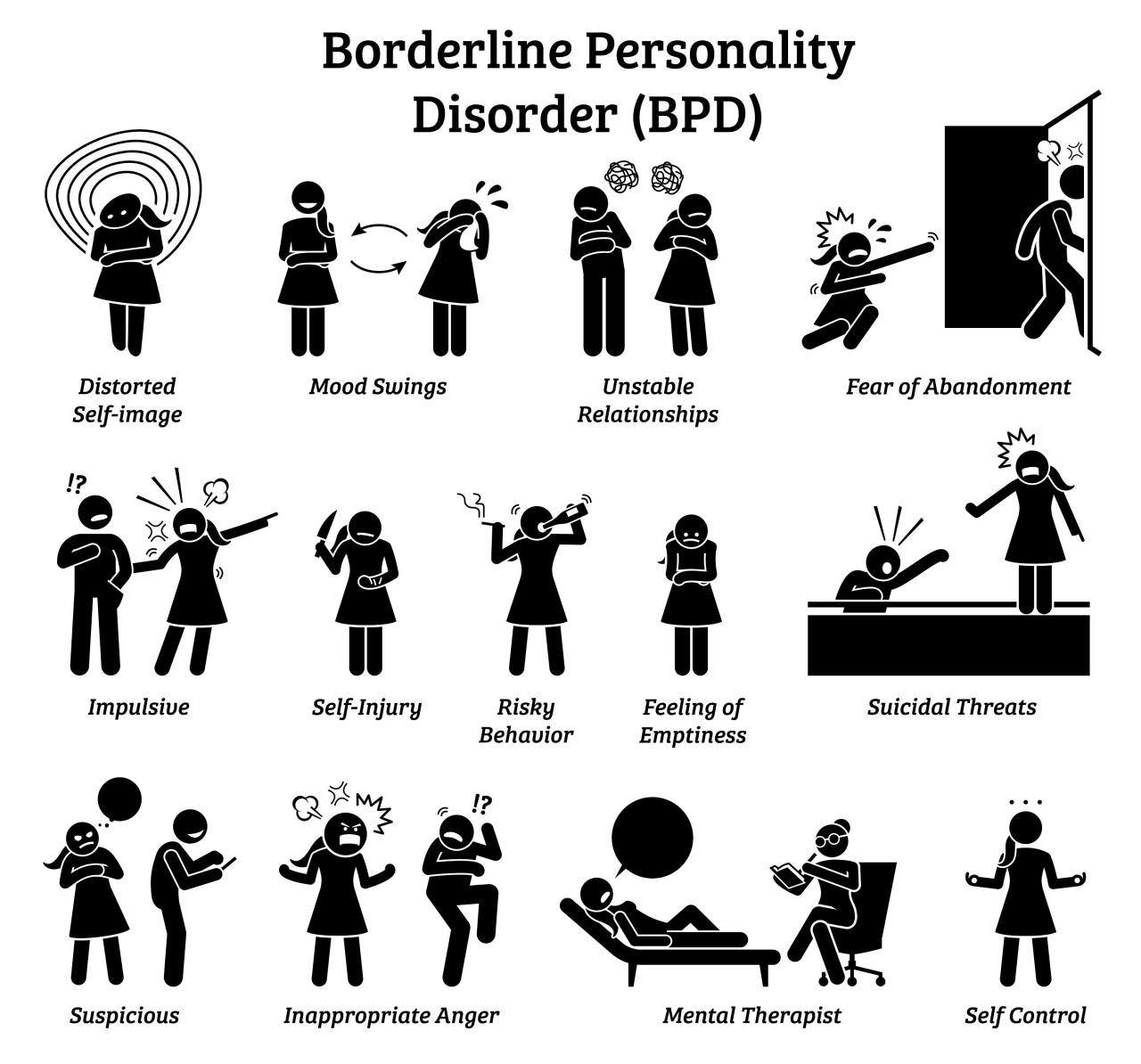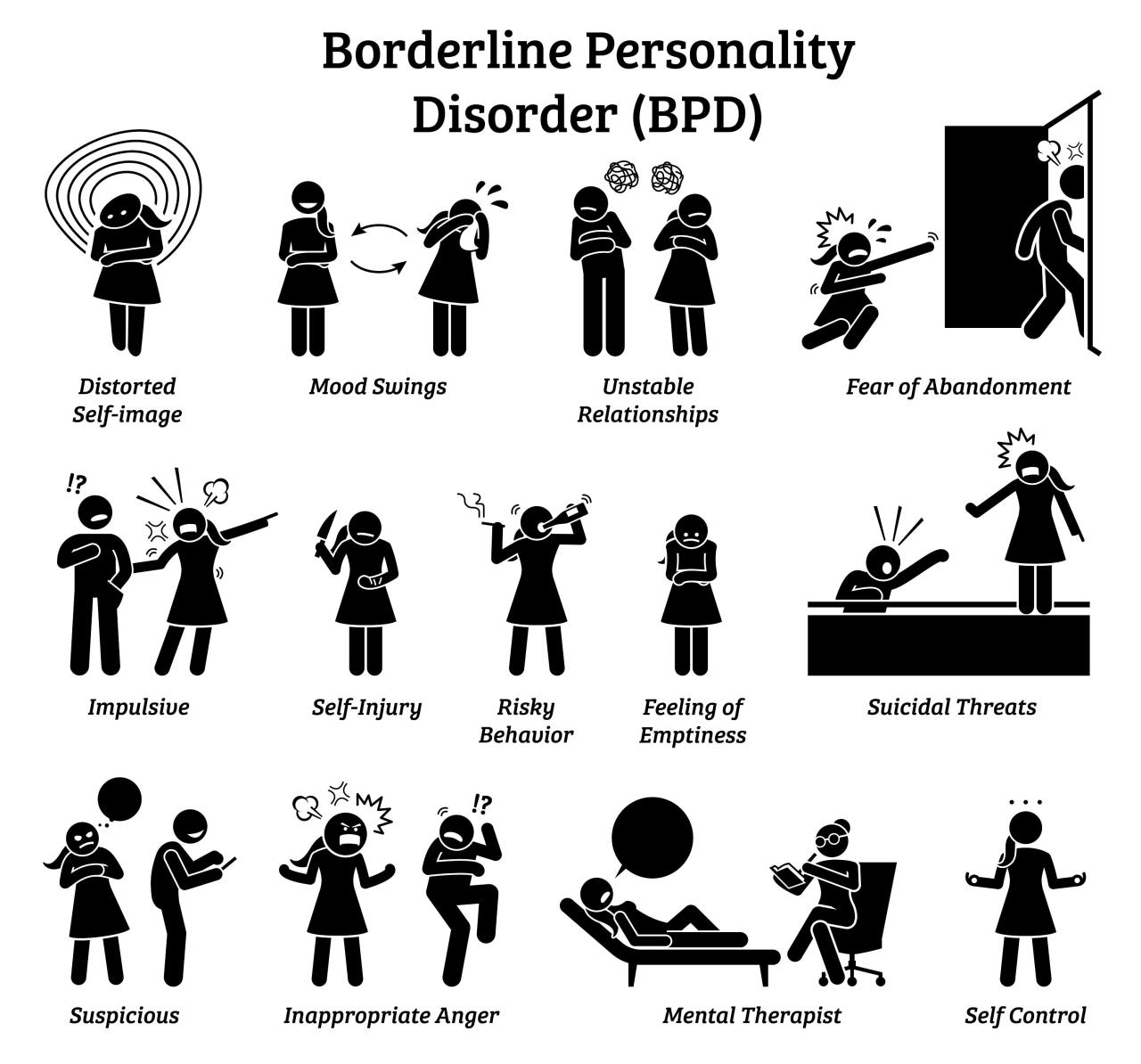Borderline personality disorder, a complex and often misunderstood condition, paints a vivid tapestry of intense emotions, impulsive behaviors, and unstable relationships. This intricate mosaic of symptoms unravels a captivating tale of both anguish and resilience.
Unveiling the Enigma of Borderline Personality Disorder
Borderline Personality Disorder

Borderline personality disorder (BPD) is a mental illness that affects how a person thinks, feels, and behaves. People with BPD often have intense emotions, unstable relationships, and difficulty controlling their impulses.
Key Characteristics
Some of the key characteristics of BPD include:
- A pattern of unstable and intense relationships
- A fear of abandonment
- Impulsivity
- Self-harm
- Suicidal thoughts or behaviors
- Emotional instability
- Difficulty controlling anger
- A distorted self-image
- Chronic feelings of emptiness
- Dissociation
Treatment Options for Borderline Personality Disorder

Borderline personality disorder (BPD) is a complex and challenging mental health condition that can significantly impact an individual’s life. Fortunately, there are various effective treatment options available to help manage symptoms and improve quality of life.
Evidence-Based Therapies
Several evidence-based therapies have been developed specifically for BPD, including:
- Dialectical Behavior Therapy (DBT): DBT is a structured and comprehensive therapy that teaches individuals skills to manage their emotions, regulate their behavior, and improve their interpersonal relationships.
- Schema Therapy: Schema therapy focuses on identifying and changing maladaptive thought patterns and behaviors that contribute to BPD symptoms.
Medication
Medication can also be an important part of BPD treatment. Medications such as antidepressants, antipsychotics, and mood stabilizers can help manage specific symptoms, such as mood swings, impulsivity, and anxiety.
Other Treatment Approaches
In addition to evidence-based therapies and medication, other treatment approaches may also be beneficial for individuals with BPD, including:
- Psychotherapy: Psychotherapy provides a safe and supportive space for individuals to explore their thoughts, feelings, and behaviors, and develop coping mechanisms.
- Group Therapy: Group therapy can provide individuals with BPD an opportunity to connect with others who are experiencing similar challenges and learn from their experiences.
It’s important to note that treatment for BPD is often individualized and may involve a combination of therapies and medications. Working closely with a mental health professional can help individuals find the most effective treatment plan for their specific needs.
Impact and Challenges of Borderline Personality Disorder
Borderline personality disorder (BPD) significantly impacts individuals and their relationships. It affects their social functioning, occupational stability, and emotional regulation.
Challenges in Social Functioning
Individuals with BPD struggle to form and maintain healthy relationships due to intense emotions, unstable self-image, and difficulty trusting others. They may experience intense mood swings, leading to conflict and relationship breakdowns.
Challenges in Occupational Stability, Borderline personality disorder
BPD can hinder occupational stability. Individuals may have difficulty maintaining employment due to impulsivity, emotional instability, and interpersonal conflicts. They may struggle to focus, make decisions, and manage stress in the workplace.
Challenges in Emotional Regulation
Emotional dysregulation is a core feature of BPD. Individuals experience intense and overwhelming emotions that can be difficult to control. They may engage in impulsive behaviors, such as self-harm or substance abuse, to cope with these emotions.
Stigma and Discrimination
BPD is often misunderstood and stigmatized. Individuals with BPD may face discrimination and prejudice, which can further isolate them and hinder their recovery.
Closing Summary
Navigating the complexities of borderline personality disorder requires empathy, understanding, and a holistic approach to treatment. By embracing evidence-based therapies, challenging stigma, and fostering supportive environments, we empower individuals to reclaim their lives and find solace amidst the storm.
User Queries
What are the hallmark symptoms of borderline personality disorder?
Emotional instability, impulsive behaviors, intense fear of abandonment, unstable relationships, and a distorted self-image.
How is borderline personality disorder diagnosed?
Through a comprehensive psychiatric evaluation that assesses symptoms against established diagnostic criteria.
What are the treatment options for borderline personality disorder?
Dialectical behavior therapy (DBT), schema therapy, and medication can effectively manage symptoms and improve quality of life.
What are the challenges faced by individuals with borderline personality disorder?
Difficulties in social functioning, maintaining relationships, regulating emotions, and achieving occupational stability.

